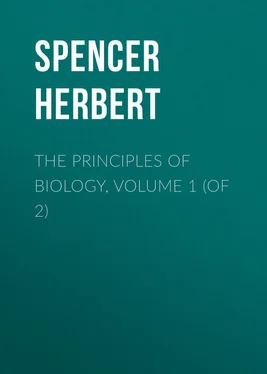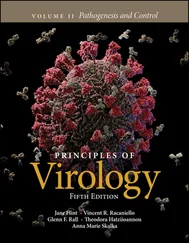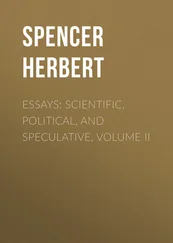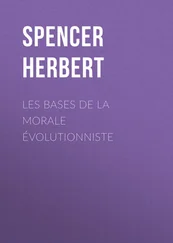Herbert Spencer - The Principles of Biology, Volume 1 (of 2)
Здесь есть возможность читать онлайн «Herbert Spencer - The Principles of Biology, Volume 1 (of 2)» — ознакомительный отрывок электронной книги совершенно бесплатно, а после прочтения отрывка купить полную версию. В некоторых случаях можно слушать аудио, скачать через торрент в формате fb2 и присутствует краткое содержание. Жанр: Философия, foreign_antique, foreign_prose, на английском языке. Описание произведения, (предисловие) а так же отзывы посетителей доступны на портале библиотеки ЛибКат.
- Название:The Principles of Biology, Volume 1 (of 2)
- Автор:
- Жанр:
- Год:неизвестен
- ISBN:нет данных
- Рейтинг книги:3 / 5. Голосов: 1
-
Избранное:Добавить в избранное
- Отзывы:
-
Ваша оценка:
- 60
- 1
- 2
- 3
- 4
- 5
The Principles of Biology, Volume 1 (of 2): краткое содержание, описание и аннотация
Предлагаем к чтению аннотацию, описание, краткое содержание или предисловие (зависит от того, что написал сам автор книги «The Principles of Biology, Volume 1 (of 2)»). Если вы не нашли необходимую информацию о книге — напишите в комментариях, мы постараемся отыскать её.
The Principles of Biology, Volume 1 (of 2) — читать онлайн ознакомительный отрывок
Ниже представлен текст книги, разбитый по страницам. Система сохранения места последней прочитанной страницы, позволяет с удобством читать онлайн бесплатно книгу «The Principles of Biology, Volume 1 (of 2)», без необходимости каждый раз заново искать на чём Вы остановились. Поставьте закладку, и сможете в любой момент перейти на страницу, на которой закончили чтение.
Интервал:
Закладка:
The arm of a man makes its first appearance in as simple a way as does the shoot of a plant. According to Bischoff, it buds-out from the side of the embryo as a little tongue-shaped projection, presenting no differences of parts; and it might serve for the rudiment of some one of the various other organs that also arise as buds. Continuing to lengthen, it presently becomes somewhat enlarged at its end; and is then described as a pedicle bearing a flattened, round-edged lump. This lump is the representative of the future hand, and the pedicle of the future arm. By and by, at the edges of this flattened lump, there appear four clefts, dividing from each other the buds of the future fingers; and the hand as a whole grows a little more distinguishable from the arm. Up to this time the pedicle has remained one continuous piece, but it now begins to show a bend at its centre, which indicates the division into arm and forearm. The distinctions thus rudely indicated gradually increase: the fingers elongate and become jointed, and the proportions of all the parts, originally very unlike those of the complete limb, slowly approximate to them. During its bud-like stage, the rudimentary arm consists only of partially-differentiated tissues. By the diverse changes these gradually undergo they are transformed into bones, muscles, blood-vessels, and nerves. The extreme softness and delicacy of these primary tissues, renders it difficult to trace the initial stages of the differentiations. In consequence of the colour of their contents, the blood-vessels are the first parts to become distinct. Afterwards the cartilaginous parts, which are the bases of the future bones, become marked out by the denser aggregation of their constituent cells, and by the production between these of a hyaline substance which unites them into a translucent mass. When first perceptible, the muscles are gelatinous, pale, yellowish, transparent, and indistinguishable from their tendons. The various other tissues of which the arm consists, beginning with very faintly-marked differences, become day by day more definite in their qualitative appearances. In like manner the units composing these tissues severally assume increasingly-specific characters. The fibres of muscle, at first made visible in the midst of their gelatinous matrix only by immersion in alcohol, grow more numerous and distinct; and by and by they begin to exhibit transverse stripes. The bone-cells put on by degrees their curious structure of branching canals. And so in their respective ways with the units of skin and the rest.
Thus in each of the organic sub-kingdoms, we see this change from an incoherent, indefinite homogeneity to a coherent, definite heterogeneity, illustrated in a quadruple way. The originally-like units called cells, become unlike in various ways, and in ways more numerous and marked as the development goes on. The several tissues which these several classes of cells form by aggregation, grow little by little distinct from each other; and little by little put on those structural complexities that arise from differentiations among their component units. In the shoot, as in the limb, the external form, originally very simple, and having much in common with simple forms in general, gradually acquires an increasing complexity, and an increasing unlikeness to other forms. Meanwhile, the remaining parts of the organism to which the shoot or limb belongs, having been severally assuming structures divergent from one another and from that of this particular shoot or limb, there has arisen a greater heterogeneity in the organism as a whole.
§ 52. One of the most remarkable inductions of embryology comes next in order. And here we find illustrated the general truth that in mental evolution as in bodily evolution the progress is from the indefinite and inexact to the definite and exact. For the first statement of this induction was but an adumbration of the correct statement.
As a result of his examinations von Baer alleged that in its earliest stage every organism has the greatest number of characters in common with all other organisms in their earliest stages; that at a stage somewhat later its structure is like the structures displayed at corresponding phases by a less extensive assemblage of organisms; that at each subsequent stage traits are acquired which successively distinguish the developing embryo from groups of embryos that it previously resembled – thus step by step diminishing the group of embryos which it still resembles; and that thus the class of similar forms is finally narrowed to the species of which it is a member. This abstract proposition will perhaps not be fully comprehended by the general reader. It will be best to re-state it in a concrete shape. Supposing the germs of all kinds of organisms to be simultaneously developing, we may say that all members of the vast multitude take their first steps in the same direction; that at the second step one-half of this vast multitude diverges from the other half, and thereafter follows a different course of development; that the immense assemblage contained in either of these divisions very soon again shows a tendency to take two or more routes of development; that each of the two or more minor assemblages thus resulting, shows for a time but small divergences among its members, but presently again divides into groups which separate ever more widely as they progress; and so on until each organism, when nearly complete, is accompanied in its further modifications only by organisms of the same species; and last of all, assumes the peculiarities which distinguish it as an individual – diverges to a slight extent to the organisms it is most like.
But, as above said, this statement is only an adumbration. The order of Nature is habitually more complex than our generalizations represent it as being – refuses to be fully expressed in simple formulæ; and we are obliged to limit them by various qualifications. It is thus here. Since von Baer's day the careful observations of numerous observers have shown his allegation to be but approximately true. Hereafter, when discussing the embryological evidence of Evolution, the causes of deviations will be discussed. For the present it suffices to recognize as unquestionable the fact that whereas the germs of organisms are extremely similar, they gradually diverge widely, in modes now regular and now irregular, until in place of a multitude of forms practically alike we finally have a multitude of forms most of which are extremely unlike. Thus, in conformity with the law of evolution, not only do the parts of each organism advance from indefinite homogeneity to definite heterogeneity, but the assemblage of all organisms does the same: a truth already indicated in First Principles .
§ 53. This comparison between the course of development, in any creature, and the course of development in all other creatures – this arrival at the conclusion that the course of development in each, at first the same as in all others, becomes stage by stage differentiated from the courses in all others, brings us within view of an allied conclusion. If we contemplate the successive stages passed through by any higher organism, and observe the relation between it and its environment at each of these stages; we shall see that this relation is modified in a way analogous to that in which the relation between the organism and its environment is modified, as we advance from the lowest to the highest grades. Along with the progressing differentiation of each organism from others, we find a progressing differentiation of it from its environment; like that progressing differentiation from the environment which we meet with in the ascending forms of life. Let us first glance at the way in which the ascending forms of life exhibit this progressing differentiation from the environment.
In the first place, it is illustrated in structure . Advance from the homogeneous to the heterogeneous, itself involves an increasing distinction from the inorganic world. Passing over the Protozoa , of which the simplest probably disappeared during the earliest stages of organic evolution, and limiting our comparison to the Metazoa , we see that low types of these, as the Cœlenterata , are relatively simple in their organization; and the ascent to organisms of greater and greater complexity of structure, is an ascent to organisms which are in that respect more strongly contrasted with the structureless environment. In form , again, we see the same truth. An ordinary characteristic of inorganic matter is its indefiniteness of form; and this is also a characteristic of the lower organisms, as compared with the higher. Speaking generally, plants are less definite than animals, both in shape and size – admit of greater modifications from variations of position and nutrition. Among animals, the simplest Rhizopods may almost be called amorphous: the form is never specific, and is constantly changing. Of the organisms resulting from the aggregation of such creatures, we see that while some, as the Foraminifera , assume a certain definiteness of form, in their shells at least, others, as the Sponges, are very irregular. The Zoophytes and the Polyzoa are compound organisms, most of which have a mode of growth not more determinate than that of plants. But among the higher animals, we find not only that the mature shape of each species is very definite, but that the individuals of each species differ little in size. A parallel increase of contrast is seen in chemical composition . With but few exceptions, and those only partial ones, the lowest animal and vegetal forms are inhabitants of the water; and water is almost their sole constituent. Desiccated Protophyta and Protozoa shrink into mere dust; and among the Acalephes we find but a few grains of solid matter to a pound of water. The higher aquatic plants, in common with the higher aquatic animals, possessing as they do increased tenacity of substance, also contain a greater proportion of the organic elements; further they show us a greater variety of composition in their different parts; and thus in both ways are chemically more unlike their medium. And when we pass to the superior classes of organisms – land-plants and land-animals – we see that, chemically considered, they have little in common either with the earth on which they stand or the air which surrounds them. In specific gravity too, we may note a like truth. The simplest forms, in common with the spores and gemmules of higher ones, are as nearly as may be of the same specific gravity as the water in which they float; and though it cannot be said that among aquatic creatures, superior specific gravity is a standard of general superiority, yet we may fairly say that the higher orders of them, when divested of the appliances by which their specific gravity is regulated, differ more from water in their relative weights than do the lowest. In terrestrial organisms, the contrast becomes marked. Trees and plants, in common with insects, reptiles, mammals, birds, are all of a specific gravity considerably less than that of the earth and immensely greater than that of the air. Yet further, we see the law fulfilled in respect of temperature . Plants generate but extremely small quantities of heat, which are to be detected only by delicate experiments; and practically they may be considered as having the same temperature as their environment. The temperature of aquatic animals is very little above that of the surrounding water: that of the invertebrata being mostly less than a degree above it, and that of fishes not exceeding it by more than two or three degrees; save in the case of some large red-blooded fishes, as the tunny, which exceed it in temperature by nearly ten degrees. Among insects the range is from two to ten degrees above that of the air: the excess varying according to their activity. The heat of reptiles is from four to fifteen degrees more than the heat of their medium. While mammals and birds maintain a heat which continues almost unaffected by external variations, and is often greater than that of the air by seventy, eighty, ninety, and even a hundred degrees. Once more, in greater self-mobility a progressive differentiation is traceable. The chief characteristic by which we distinguish dead matter is its inertness: some form of independent motion is our most familiar proof of life. Passing over the indefinite border-land between the animal and vegetal kingdoms, we may roughly class plants as organisms which, while they exhibit that kind of motion implied in growth, are not only devoid of locomotive power, but with some unimportant exceptions are devoid of the power of moving their parts in relation to each other; and thus are less differentiated from the inorganic world than animals. Though in those microscopic Protophyta and Protozoa inhabiting the water we see locomotion produced by ciliary action; yet this locomotion, while rapid relatively to the sizes of their bodies, is absolutely slow. Of the Cœlenterata a great part are either permanently rooted or habitually stationary; and so have scarcely any self-mobility but that implied in the relative movements of parts; while the rest, of which the common jelly-fish serves as a sample, have mostly but little ability to move themselves through the water. Among the higher aquatic Invertebrata , – cuttlefishes and lobsters, for instance, – there is a very considerable power of locomotion; and the aquatic Vertebrata are, considered as a class, much more active in their movements than the other inhabitants of the water. But it is only when we come to air-breathing creatures that we find the vital characteristics of self-mobility manifested in the highest degree. Flying insects, mammals, birds, travel with velocities far exceeding those attained by any of the lower classes of animals. Thus, on contemplating the various grades of organisms in their ascending order, we find them more and more distinguished from their inanimate media, in structure , in form , in chemical composition , in specific gravity , in temperature , in self-mobility . It is true that this generalization does not hold with complete regularity. Organisms which are in some respects the most strongly contrasted with the environing inorganic world, are in other respects less contrasted than inferior organisms. As a class, mammals are higher than birds; and yet they are of lower temperature and have smaller powers of locomotion. The stationary oyster is of higher organization than the free-swimming medusa; and the cold-blooded and less heterogeneous fish is quicker in its movements than the warm-blooded and more heterogeneous sloth. But the admission that the several aspects under which this increasing contrast shows itself, bear variable ratios to each other, does not conflict with the general truth that as we ascend in the hierarchy of organisms, we meet with not only an increasing differentiation of parts but also an increasing differentiation from the surrounding medium in sundry other physical attributes. It would seem that this trait has some necessary connexion with superior vital manifestations. One of those lowly gelatinous forms, so transparent and colourless as to be with difficulty distinguished from the water it floats in, is not more like its medium in chemical, mechanical, optical, thermal, and other properties, than it is in the passivity with which it submits to all the influences and actions brought to bear upon it; while the mammal does not more widely differ from inanimate things in these properties, than it does in the activity with which it meets surrounding changes by compensating changes in itself. And between these extremes, these two kinds of contrast vary together. So that in proportion as an organism is physically like its environment it remains a passive partaker of the changes going on in its environment; while in proportion as it is endowed with powers of counteracting such changes, it exhibits greater unlikeness to its environment. 20
Читать дальшеИнтервал:
Закладка:
Похожие книги на «The Principles of Biology, Volume 1 (of 2)»
Представляем Вашему вниманию похожие книги на «The Principles of Biology, Volume 1 (of 2)» списком для выбора. Мы отобрали схожую по названию и смыслу литературу в надежде предоставить читателям больше вариантов отыскать новые, интересные, ещё непрочитанные произведения.
Обсуждение, отзывы о книге «The Principles of Biology, Volume 1 (of 2)» и просто собственные мнения читателей. Оставьте ваши комментарии, напишите, что Вы думаете о произведении, его смысле или главных героях. Укажите что конкретно понравилось, а что нет, и почему Вы так считаете.












